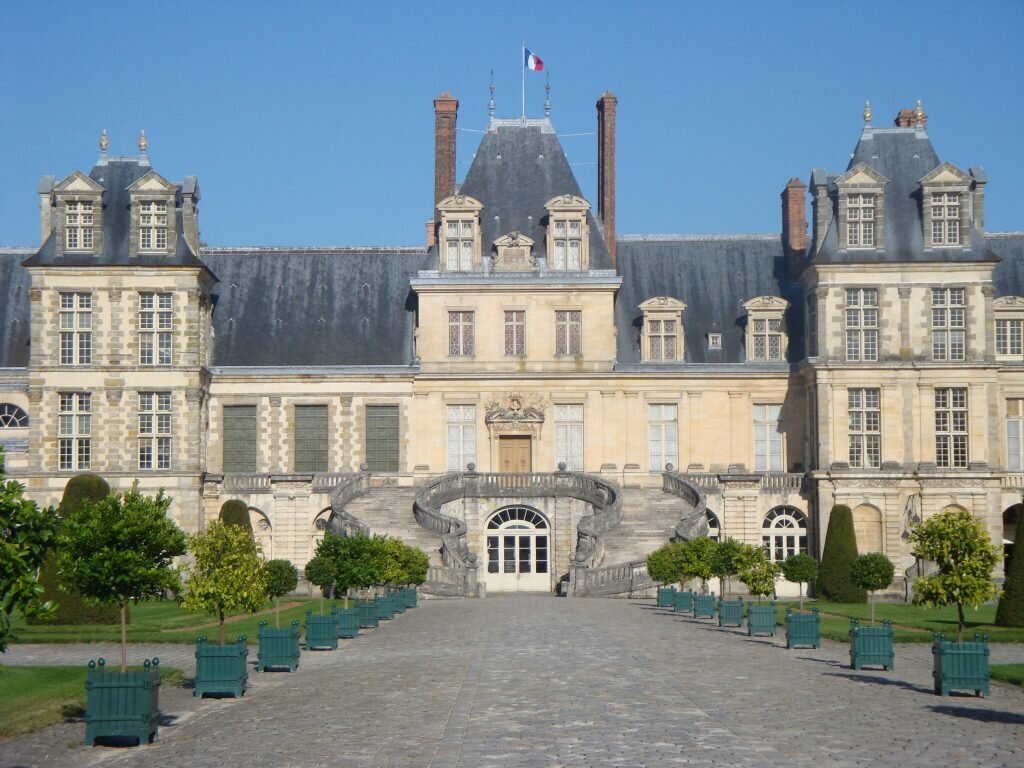Architectural Heritage: First and Second Empire
With its palace and other historical places in the town and forest, Fontainebleau is a must for history fans. It is a designated Ville Impériale with historic architecture, château, squares, sumptuous Italian-style theatre and the parish church of Saint-Louis, built between 1611 and 1614 by Claude Martin and extensively altered under the Second Empire. At the heart of the forest of Fontainebleau, the Hippodrome de la Solle, inaugurated by the Emperor Napoleon III and the Empress Eugénie on 22 June 1862, still hosts horse races today.
Below, discover the imperial architecture of the “imperial city” of Fontainebleau.


> Château of Fontainebleau: “The true abode of kings, the house of ages” (Napoleon on Saint Helena, August 1816). Life at the château of Fontainebleau under the First Empire is inextricably entwined with the rise and fall of the Eagle.
> Church of Saint-Louis: Built between 1611 and 1613, then extensively altered in 1860 and considerably extended and enriched by Napoleon III, who came regularly to the château and wished to give the town more monumental character. Construction of the church was completed in 1868.
> The Town Hall: Rebuilt in 1864 under Napoleon III, the former town hall of Rueil-Malmaison is a replica of this. The town’s arms were granted by Napoleon III in 1864.
> Hippodrome de la Solle: Set in verdant woodland, this is one of the oldest hippodromes in France. Under the reign of Louis XVI, the dukes of Artois and Chartres organised the first horse race at Fontainebleau in November 1776 in the presence of the king, who had come to hunt. This first trial race was a huge success. The choice of the valley of the Solle was determined by the Light Cavalry of the Imperial Guard in 1852. They were stationed in Fontainebleau and had cleared that area to use it for manoeuvres.
> Sénarmont Riding Arena: In 1807, the Emperor Napoleon 1 had a riding arena built which is remarkable for its roof frame made in chestnut wood with a single vault. The riding arena was built to give riding lessons to the pupils of the special imperial military school created by Napoleon I in the Louis XV wing of the château in 1803.
> Saint Hérem Cross: In 1660, François-Gaspard de Montmorin, the governor of the town and the château of Fontainebleau, and capitaine des chasses in charge of guarding against poaching in the forests of Bière and Brie, had a cross erected at this crossroads. It was destroyed in 1793 and re-erected in 1827. It was at this crossroads that Napoleon I awaited Pope Pius VII, on 26 November 1804, for his forthcoming coronation. In 1863, the Emperor Napoleon III asked Alexis Paccard to erect a third stone cross commemorating this event. After their departure, young people held races here in a family atmosphere. The site being ideal, the decision was taken to build a hippodrome.
> Place Napoléon Bonaparte: Napoleon III gave up a part of the Garden of Diana to the town for the construction of this square. The Hôtel de l’Aigle Noir, formerly Hôtel de Retz, was renovated in 1830.
> Tour Denecourt: built by Claude-François Denecourt, nicknamed the “Sisyphus of Fontainebleau”, this square tower was initially named the “Fort of the Emperor” by the faithful Bonapartist. Inaugurated by Napoleon III and Eugénie in 1853, it collapsed on 28 January 1878 because it was built without mortar. The following year, Claude-Charles Colinet opened a subscription which raised more than 2,000 francs. Thanks to this sum, the tower was rebuilt more soundly this time, and raised by more than one metre. It was named “Tour Denecourt”, or Denecourt Tower, in 1882, by a decision of Fontainebleau Town Council.
> Fontainebleau-Avon railway station: the station and Paris-Fontainebleau rail link were built under Napoleon III.
